
The new Geography-Laboratory:
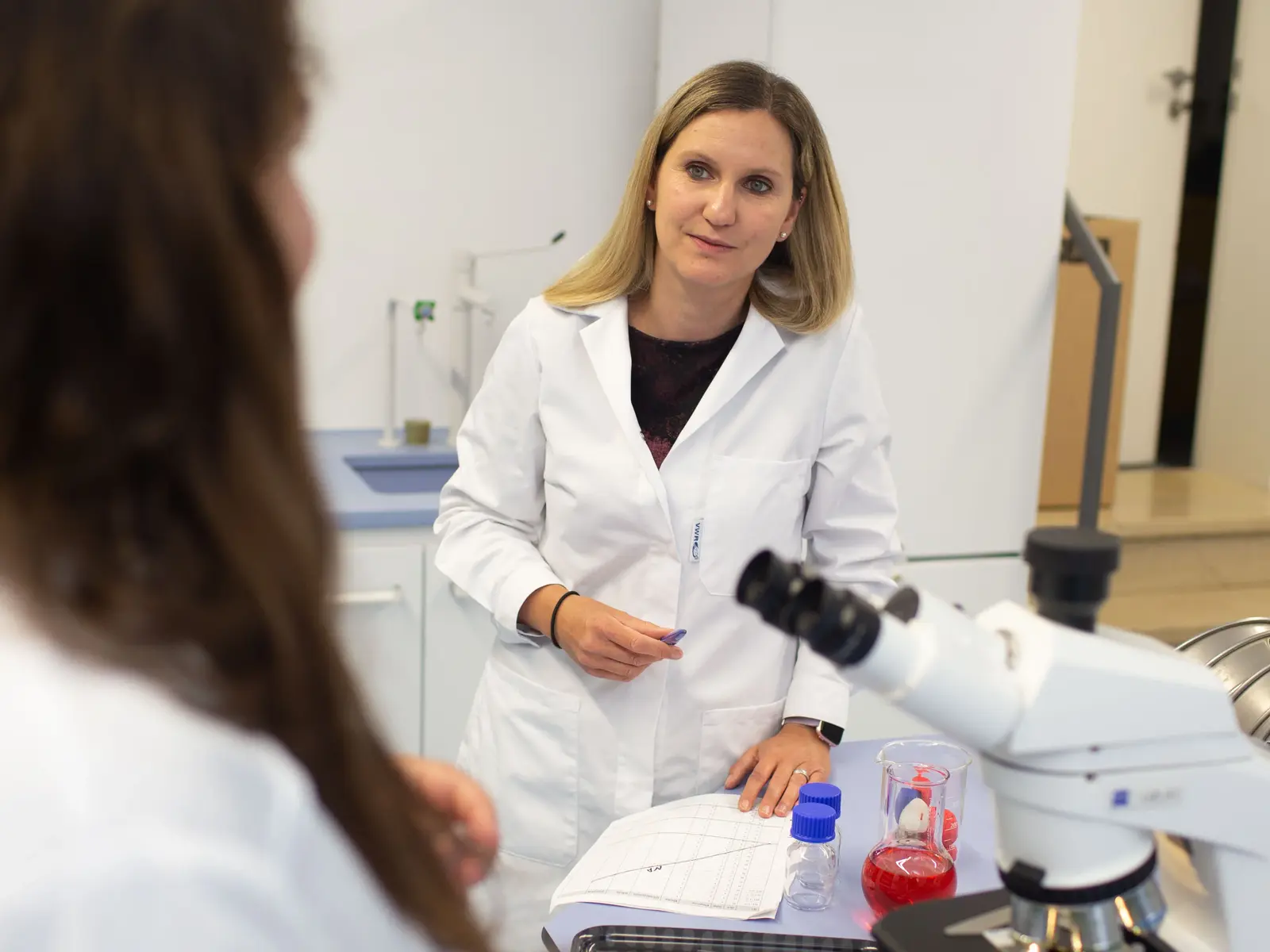
Please note: By clicking on the image area, you give your consent for video content to be reloaded from YouTube, for YouTube/Google cookies to be stored on your IT system and for personal data such as your IP address to be passed on to Google. If you click on another video after having finished watching the video content, YouTube will open in a new tab of your browser and will collect more data from you. Further information is provided in our data protection notice and under Google Privacy .
Measuring instruments
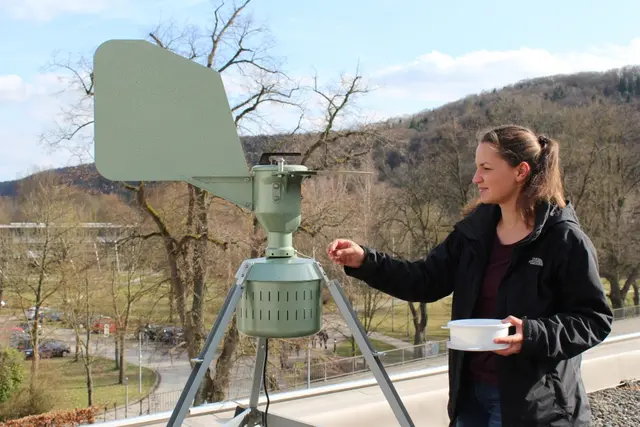
Pollen traps
A Burkard pollen trap is placed on the rooftop of the University's canteen for aerobiological pollen measurements. This pollen trap has a built-in pump to aspirate air (ten liters per minute) through a 14 mm x 2 mm orifice. A drum is mounted behind the orifice on which a tape (Melinix), applied with a thin layer of Vaseline, is attached. Aspirated pollen and other organic and anorganic particles adhere to this tape. The drum moves with a speed of 2 mm/h, makes one revolution in seven days and is changed every week at the same time. In the laboratory, the tape is cut into seven day segments, which makes it possible to determine the average pollen concentration per day.
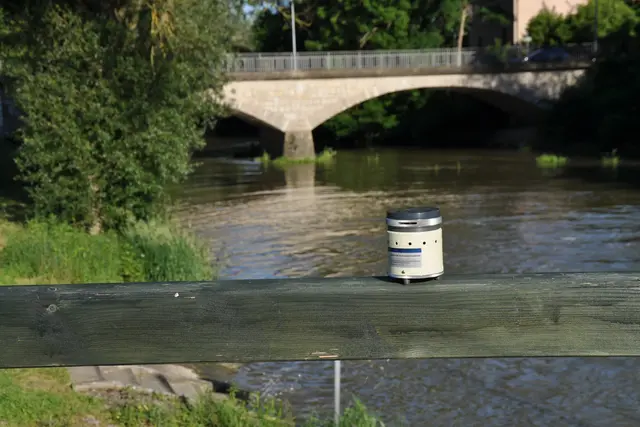
Personal Volumetric Air Samplers (PVAS) allow an hourly resolution of aerobiological pollen concentration. Air is taken in through an orifice on top of the sampler and contained pollen impacts directly on an inserted slide. The PVAS are used for indoor measurements or other measurement campaigns.
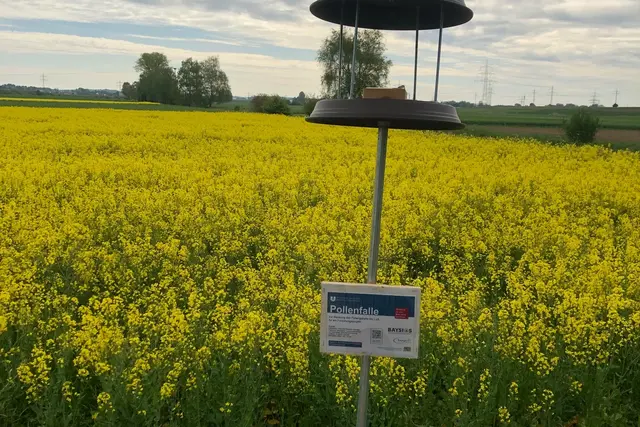
One gravitative pollen trap is placed in the canteen's front yard. It measures the cumulated amount of pollen over a longer period of time (normally one week). The slide is applied with a thin layer of Vaseline on which pollen deposits through gravity. This methodology is also applied in many of our research projects.
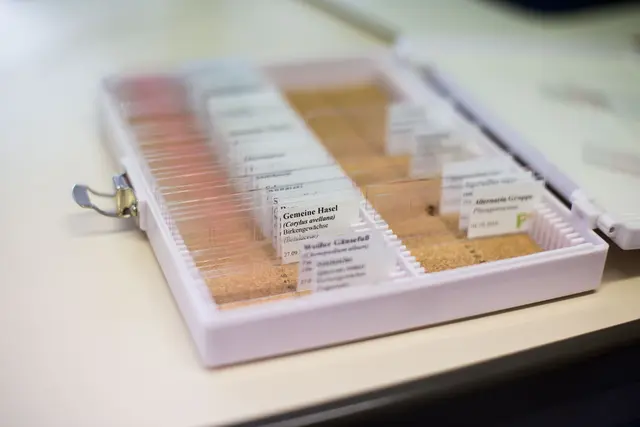
Pollen preparation
All slides are prepared in our laboratory for further analysis. Special applications include extraction of pollen trapped in flowers to determine pollen production or preparation of extracts from samples collected in Tauber pollen traps.
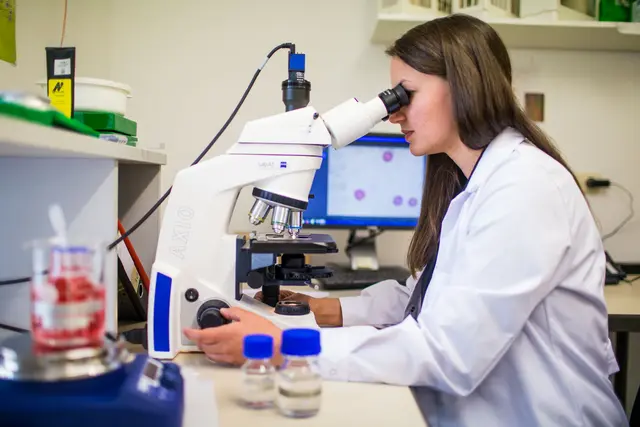
Pollen analysis
Pollen composition and concentration can be determined using an optical microscope (Zeiss) and be displayed on the computer with a high-resolution camera. In addition to outdoor pollen traps the professorship also uses several indoor pollen traps to measure individual pollen and spore exposure.
UAV
The DJI Mavic 3 Multispectral drone flight system is equipped with a high-resolution RGB and a four-channel multispectral camera, while the RTK module also offers centimetre-precise positioning. The DJI Mavic 2 Enterprise Advanced is equipped with thermal and RGB cameras. This allows remote sensing issues such as plant growth, the assessment of plant vitality and phenology to be addressed.
Hemispherical fisheye camera
This special camera can be used to measure biophysical vegetation features such as plant canopy indices. It can also be used in urban climatology (e.g. sky view factor). Image data can be analyzed using HemiView software.
LAI-2200C Plant Canopy Analyzer
The Plant Canopy Analyzer LAI-2200C (LI-COR) can be used to measure indices such as the leaf area index (LAI). LAI is calculated from the below and above canopy measurements using the integrated optical sensor.
Chlorophyll meter
The SPAD-502Plus chlorophyll meter (Konica Minolta Optics) determines the SPAD value as a relative indicator of chlorophyll content and can also be used for very small leaf areas. It measures the amount of light transmitted (or absorbed) by the leaf at wavelengths of 650 nm (red) and 940 nm (infrared).
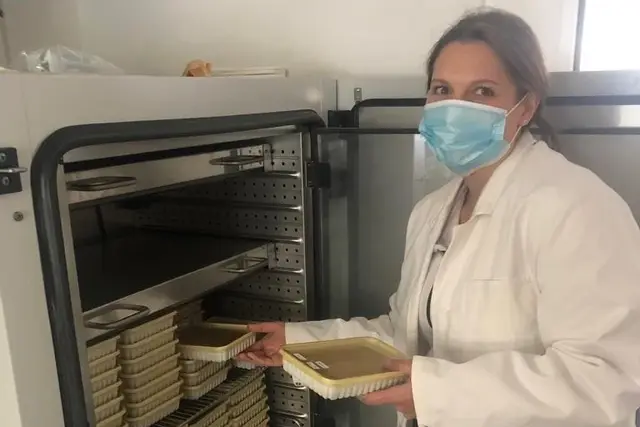
Climate chamber
The climate chamber is not only suitable for the calibration of measuring instruments, but is also used in experimental work. These relate, among other things, to phenology, seed testing and pollen viability.
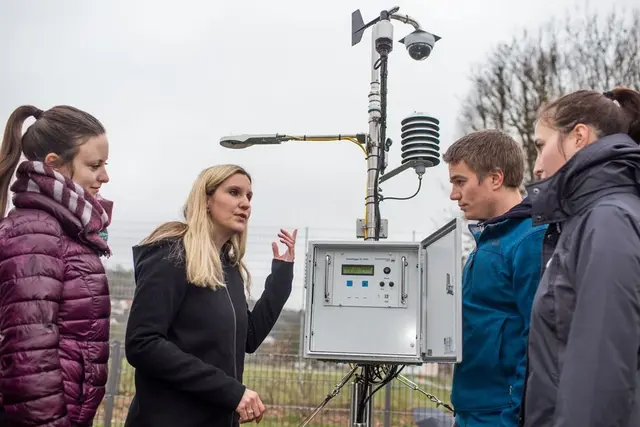
Weather stations
For our research projects several weather stations are available, including one at the KU Eichsätt canteen car park, which records weather data in one-minute intervals.
The measured parameters include temperature and humidity of air and soil, precipitation, wind direction and wind speed, air pressure and radiation. The parameters are measured following the standards of the German Meteorological Office (DWD). All data can be requested and used for student projects.
Further meteorological measuring instruments
Other various modern measuring instruments (e.g. Kestrel Weather Tracker, Heat Stress Tracker,Wind Anemometer) are also available for research projects and courses. The wind anemometers can be attached to existing measurement towers to determine wind turbulence.
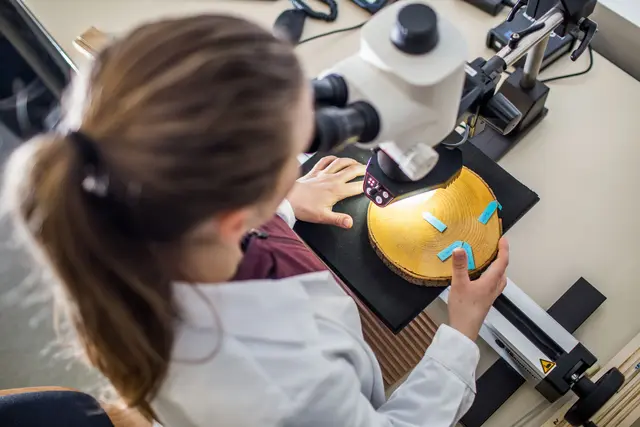
Dendrochronology
The measuring table LinnTab 6 enables the analysis of tree cores, for example with regard to ring thickness and texture. This information can be used to draw conclusions on climatological or geomorphological changes in a specific area.
For our work we use the following programs:
- AgiSoft Metashape
- ArcGis
- Cervus & Colony
- ENVI-met
- FV2200
- HemiView
- HYSPLIT
- KLAM_21
- MSR
- Onset HOBOware
- Python
- QGIS
- R
- SAGA
- SPSS